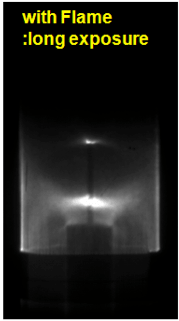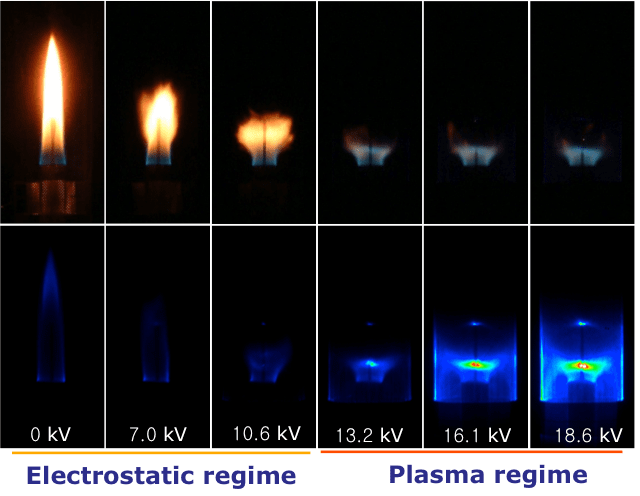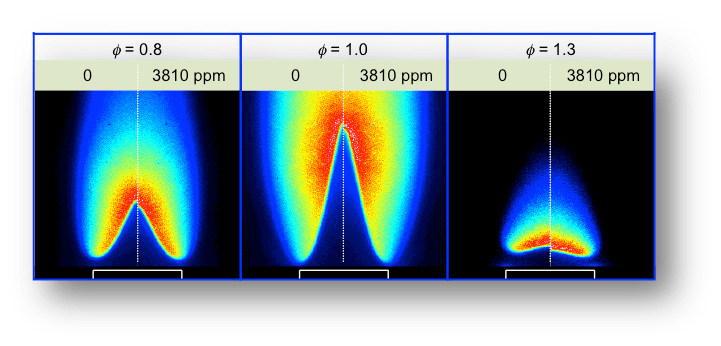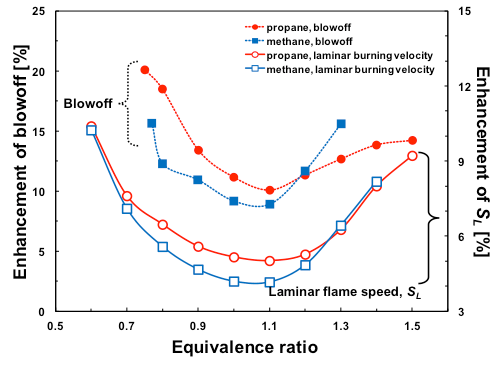


We are investigating the effects of electrical discharges on the characteristics of laminar flames in various conditions to understand fundamental physicochemical mechanism behind.

The effect of non-thermal plasma on diffusion flames in a coflow jet has been studied experimentally by adopting a dielectric barrier discharge (DBD) technique. The plasma reactor had wire-cylinder type electrodes with AC power supply operated at 400 Hz. The effect of flame on electrical discharge behavior was first investigated to identify the regime of plasma generation, discharge onset voltage, and delivered power to the plasma reactor. The generation of streamers was enhanced with a flame due to increased reduced electric fields by high temperature burnt gas and the abundance of ions in the flame region. The effect of streamers on flame behavior reveals that the flame length was significantly decreased as the applied voltage increased. The yellow luminosity by the radiation of soot particles was also significantly reduced. The temperature of burnt gases, the concentrations of major species, and the spatial distribution of OH radical, PAH, and soot have been measured. The formation of PAH and soot was influenced appreciably by the non-thermal plasma, while the flame temperature and the concentration of major species were not influenced much with the plasma generation. The results demonstrated that the application of non-thermal plasmas can be a viable technique in controlling soot generation in flames with low power consumption in the order of 1 W.
[Cha, Lee, Kim, Chung, Combust. Flame 141:438 (2005)]





[Tran, Won, Ombrello, Cha, Combust. Flame 161:917 (2014)]